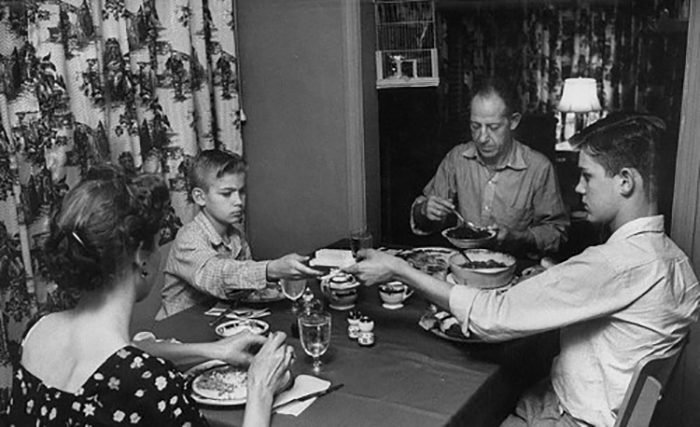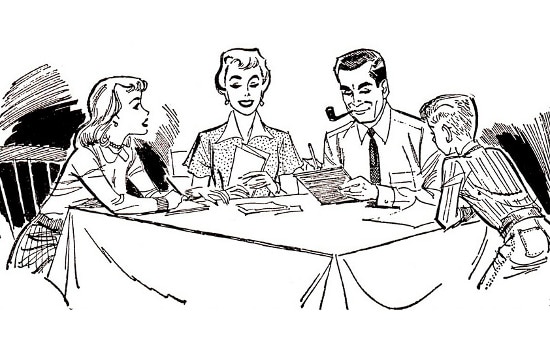
Editor’s Note: This is a guest post from Khaled Allen.
I hadn’t seen another human being all day, I was miles from my car, and the sun was going down, but I wasn’t even thinking of going back. I huddled in my one-person tent, which wasn’t even tall enough for me to sit upright, as a thunderstorm hammered down around me. My heart was racing; the impending darkness and the raging storm were setting off alarm signals in the primitive parts of my brain. But I was committed to conquering my fears. I had spent too many nights throughout life scared of the dark like a little kid, and I had decided it was time I grew up.
The day before, I had driven myself out to northern Connecticut and hiked into a campsite on the Appalachian Trail. I have serious problems sleeping isolated from other people, and while I had arranged my life to avoid needing to, it was a fear that had held me back. I selected this camping trip as a rite of passage that would prove my fears were unfounded, teach me how to control them, and set me free to move on in my life.
Throughout history, humans have used rites of passage to mark major life transitions. For men in particular, the rite of passage holds special importance as a ceremonial ritual. Women have very clear biological markers of their progress through life — menarche, childbirth, menopause — but for men, the stages of life are not always so clearly marked.
Thus, we create rituals and challenges to test and signify our readiness to move on to the next stage in life.
What Is a Rite of Passage?
A rite of passage is a ceremony or ritual that presents a man with a particular challenge that needs to be overcome in order for the man to grow or progress. It signals to both the man himself and to his community that he is ready to take on the responsibilities and privileges of mature manhood.
What makes rites of passage unique is that they tend to carry with them a do-or-die aspect; you either succeed or face severe consequences. In some historical contexts, death or serious injury were possible outcomes; a common rite of passage into manhood was to hunt a particularly dangerous animal or kill an enemy in battle. Even if a man’s failure to complete a rite of passage didn’t hurt him physically, it could still carry a heavy psychological price – feeling shamed by his community, and ashamed of himself.
While a modern rite of passage doesn’t need to be potentially lethal, a man’s pride and confidence in himself is still on the line. It is a test of commitment, and without real commitment, real change is not very likely. As long as you have a way to go back to the way things were, you will continue to rely on old patterns.
Elements of a Rite of Passage
There Are 3 Phases
Traditionally, rites of passage have 3 phases: separation, transition, and reincorporation. First a young man leaves behind his old life and comfort zone. Next he enters an in-between period where he learns new behaviors and ways of thinking, and strives to pass certain challenges. Finally, he remerges into a community that recognizes his accomplishment and new status.
An easy-to-grasp modern example of these 3 phases can be seen in the process of becoming a member of the military. A recruit says goodbye to civilian life, is trained and tested in boot camp, and then graduates as a full-fledged soldier.
In creating your own rite of passage, it is not necessary to strictly adhere to this tripartite structure, but creating a rough semblance of it can increase the experience’s efficacy.
Success is Not Guaranteed
Often, the rite of passage asks you to perform near or slightly past the limits of your abilities. Alternatively, it can require you to rely on behavior patterns you have avoided or are uncomfortable with, such as claiming authority and responsibility, putting you in a position where you will need to break through old limitations in order to succeed.
Besides requiring total commitment, this aspect of the rite of passage also tests a man’s courage. If the threat of failure is actually real, it is a good determination of how ready the man is to take on the responsibilities of decision-making.
There’s a Deadline
Another defining element of a rite of passage is that it is delineated in time. As a ceremonial ritual, there needs to be a set beginning and end. Partly, this is because most rites of passage are quite stressful and it is important to limit the amount of stress brought on, but it also creates the opportunity to consolidate afterwards.
In addition, a set time limit creates some added pressure to overcome the challenge in question.
You’re On Your Own
Isolation is a common feature of most rites of passage. The reason is simple: it is a ritual of personal growth, and if you have access to aid, it means you cannot take full ownership of your progress. The only caveat to this is that some rites of passage are intended to develop a team or tribe dynamic. Navy SEAL training is a good example of this. In that case, the team works together, but is isolated from external assistance and appeals.
Social Recognition
Despite the isolation, a rite of passage is part of a man’s growth in his social group, whether that’s a family, a tribe, a company, a military group, or some other organization.
You can certainly separate yourself and transition on your own, but without the cooperation of your social group, the reincorporation phase of a rite of passage can be difficult, making the experience less effective overall. This last stage requires that your friends and family recognize the change in you and treat you accordingly. If they don’t, they will expect old patterns from you, and the social pressure of those expectations can either lead you to return to your old ways or to break from the group (depending on the extremity of your transition).
This doesn’t necessarily mean that a rite of passage must always be an “official” one that is recognized and supported by one’s friends and family; I have undergone rites of passage of my own creation which were so deeply transformative that those around me couldn’t help but acknowledge the profound change and treat me differently.
Have an End Goal
It is important to know what the desired outcome of a particular rite of passage is. In most cases, it is meant as a final and incontestable demonstration that the young man has the qualities necessary to take his place in adult life. For most societies, courage, responsibility, and a willingness to accept consequences are defining traits of a male’s role.
In my case, I wanted to free myself of my fear of the dark and isolation. I wanted to become master of my imagination, to harness my mind. To me, these were necessary to feel comfortable as a responsible adult.
If you’ve chosen something like a marathon, the desired outcome might be the confidence to know that you can overcome a significant physical challenge.
How to Make Your Own Rite of Passage
If you’re tired of questioning your own investment in life, want to break old patterns that aren’t serving you, and are ready to embark on a rite of passage, here’s what you’ll need to know to create your own:
Choosing the Challenge
Everyone’s challenge will be different, unless you are part of a culture or organization that has established traditions. For the most part, however, the challenges facing men are similar.
Determine what you want to learn or what obstacle you’d like to overcome. While the same challenge might serve for multiple obstacles, having a set goal in mind will enable you to focus your energies on one thing at a time.
You want to choose an activity that you are actually capable of succeeding in, at least physically. The real barrier to success should be mental and emotional. For example, I had the skillset to camp in the woods alone, but I’d never done it before because I was scared. You should have a good sense that, if you were committed 100% to the challenge, you could complete it, even if it might be very uncomfortable.
Don’t put yourself in a position where you will need to learn new skills on the fly. That is not the purpose of a rite of passage, and it could be potentially dangerous. For example, while a common rite of passage for pilots is their first solo flight, an experienced flight instructor has already determined that the student is capable of the flight. That doesn’t make it less scary, but it is safer.
Setting the Parameters
As long as there have been tests, there have been ways to cheat them, and rites of passage are no exception.
In my case (staying in the woods) I determined that I had to stay a full three nights. I could have stayed one or two nights and left, since after the second night, I had effectively learned to control my fear. In fact, I did seriously consider leaving, but since I had made an agreement with myself, I wouldn’t have been able to consider the rite of passage as complete.
Make sure you understand exactly what constitutes failure, what is considered cheating, how you might make up for it (if you even give yourself that option), and what success looks like.
This will take some foresight on your part, as well as a good dose of honest self-assessment. You don’t do yourself any favors by overestimating your integrity and commitment, so take into account your less reliable behavior.
Committing
The last important element to consider is creating commitment. The problem is that it is easy to state a commitment, but real commitment means taking on a cost for failure. You aren’t truly committed to an acrobatic trick, for example, until you’re in the air. Then, you have no choice but to complete it and land, or else crash.
The trick is to transform a stated commitment into a concrete one.
So how do you create this kind of commitment? There are a few ways to do it.
The first, and easiest, is to force a buy-in. In some high stakes card games, a buy-in demonstrates that you are taking things seriously because before you’ve even played the first hand, you have some skin in the game. This is demonstrated to the other players, but it also gets you more focused; you simply wouldn’t take things as seriously if there was no cost for backing out.
A rite of passage should have something similar. In my case, I hiked 10 miles into my campsite. Every step farther away from my car piled on the commitment. By the time the sun went down, hiking out was impossible.
The other method, which has become a staple of the personal development world, is social commitment. Tell all your friends what you’re doing so if you fail, they will know and you’ll feel bad. Humans will do some pretty astonishing things to look good, but this requires that you already have a habit of living up to your word.
A better strategy is to tell someone with whom you have a competitive relationship. It can be a friendly one, or not, but this is the person you would do anything to avoid giving any ammunition to throw at you.
For me, that person was my father. The double threat of letting him down and being teased by him for being scared was more than enough to keep me from even contemplating backing out (not that he would have, but as a young man boomeranging back to my parents’ place, I imagined he was just looking for ways to get at me — my own insecurities).
Social Acceptance and Reintegration
Building on the social commitment, make sure your communities are aware of your plans. Try to recruit them in supporting you by asking them to treat you differently if you succeed.
The classic example is the overweight person whose friends have stopped inviting him to activities that involve physical exertion because he had a pattern of complaining. He might commit to a marathon and pointedly ask his friends to invite him to be active with them during or after training.
If taking the initiative is what you’re working on during your rite of passage, you might ask your wife to expect you to take the lead in planning and executing a weekly family meeting once you return from your passage.
Don’t assume your family and friends will automatically change the way they treat you. Make clear how you expect to be treated. In the example of the fledgling runner, they might applaud his efforts but continue to exclude him simply because it’s become a habit.
Friends and family who refuse to treat you differently, especially after you have asked clearly and hold up your end, are not being supportive of your growth. They may be understandably uncomfortable (you’re basically changing how you relate to them). How you respond to that is up to you, just be aware you may slip back into old patterns around them unless you are especially vigilant.
A Sample Rite of Passage
My rite of passage in handling fear was chosen because my particular concern was being able to feel safe without other people around. It was inspired by my father, who had done a solo canoe trip years ago and told the story of meeting up with two burly men on the trail who were amazed he was out alone, shuddering at the thought of spending a night in isolation.
A camping trip was ideal because, even on a busy day, tent sites are far enough away as to be isolated. I have been camping all my life, and have led a few trips, so I wasn’t worried about my ability to take care of the practical aspects.
The conditions were simple: sleep three nights alone in the woods. Failure would have included not sleeping at all (suggesting an inability to deal with my fear) or hiking out before the third morning.
Upon completion, I felt a quiet certainty about my ability to handle myself on my own, not just at night, but in general. My parents also shifted their expectations of me, which was actually really uncomfortable at first despite the camping trip; I still wanted to rely on them as a child might, but the new pattern had been set and acknowledged. Eventually, our new relationship became entrenched and we related to each other as emotionally independent adults, shown mainly by the types of conversations we had and how they responded to my opinions.
Other Examples
The forms a self-created rite of passage can take are numberless. It can involve big adventures like traveling the world alone for a summer, hitchhiking or riding a motorcycle across the country, climbing a mountain, or hiking the Appalachian Trail. Or it can be something smaller like my camping trip, giving a public speech, or running a race. Rites of passage don’t have to be one-time events either. In many cultures around the world, young men underwent a dozen rituals stretched out over a decade or more. You can set up a rite of passage for yourself anytime you feel stuck in life, and need a tangible way to move to the next level.
A more esoteric rite of passage, called a sankalpa, comes from Yogic meditation practice. It is a kind of vow you make or are given by your guru, usually designed to test your resolve or reveal a spiritual truth. A simple sankalpa might be an extra half hour of meditation before your regular practice. More difficult ones might be doing several thousand yoga sequences over a year.
Sankalpas usually stretch over a long time and should be performed at the same time each day. If you miss a day, accidentally start late, or otherwise fail to complete the practice, you must start over.
Familiar rites of passage in young men’s lives include the first day of school, summer camp, high school and college graduation, and the first job. If these events are accompanied by the social structure and recognition mentioned above, they can serve as permanent milestones of growth in a man’s life. Often, parents go to the ceremonies, but then continue to treat their son with the same patterns they always have, leading to a buildup of tension that will eventually force a change in a less constructive way. The first time your son returns from summer camp, he will be different, and if you make a point of treating him differently, the changes can stick.
If you are feeling stuck in your life or frustrated at your limitations, this is a call for you to create your own rite of passage to aid your growth.
If you have an idea for a rite of passage or have undertaken one in the past, please share it in the comments. Your story could inspire a young man to take on the commitment that could change his life.
_________________________________
Khaled Allen is a writer and adventurer who explores the ways human potential can be unlocked. He currently lives in Boulder, CO, where he hikes, teaches self-defense, and meditates…a lot.







